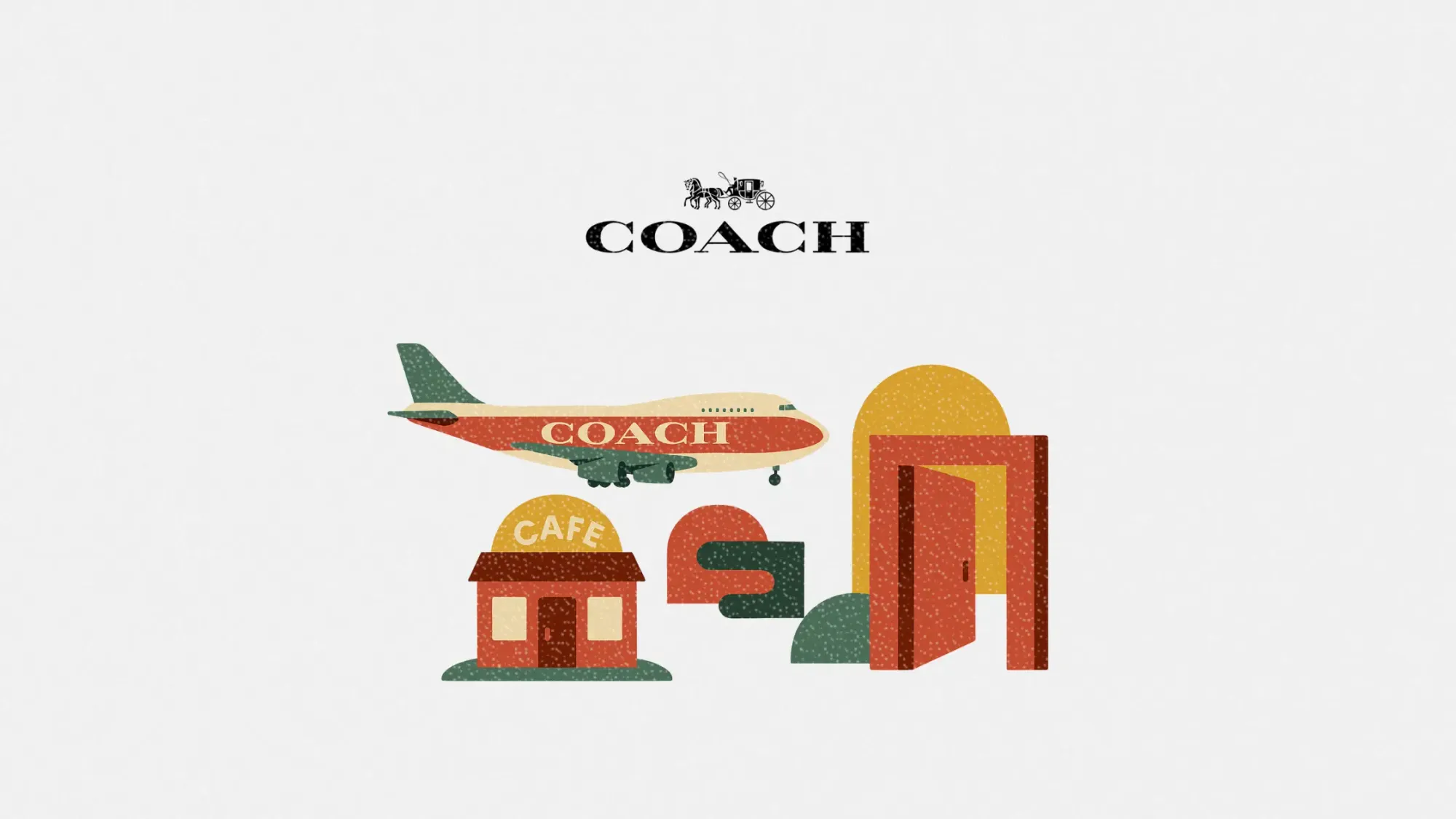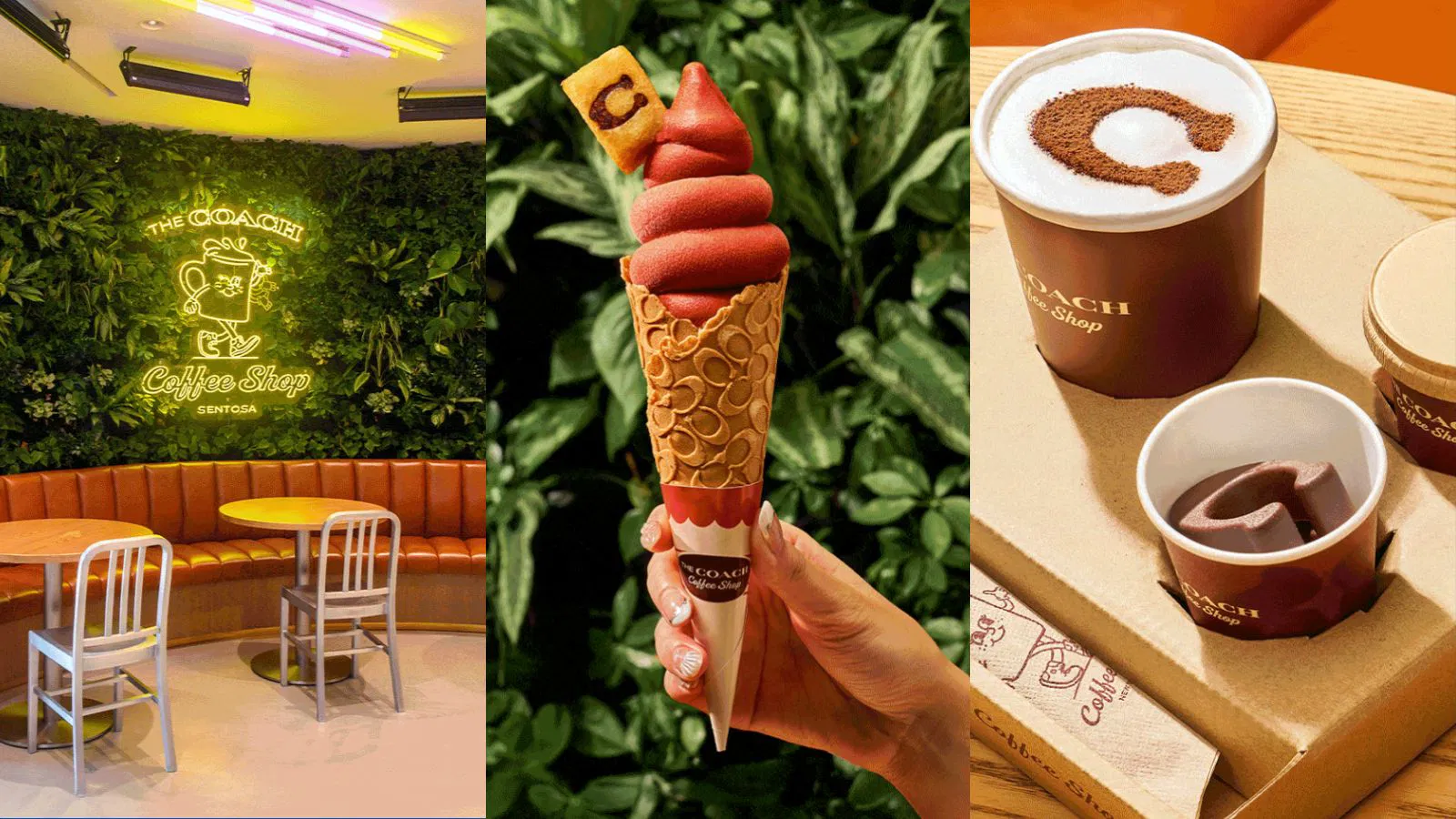Coach’s Gen Z retail strategy is more than just handbags
Coach is turning retail into full-on experiences and Gen Z is here for it

Coach is no longer just a leather goods brand. It is building an entire lifestyle universe designed to appeal to Gen Z. Think immersive spaces, nostalgic design, themed cafés, and even a repurposed Boeing 747.

This article explores how Coach is evolving from traditional retail into full-blown experiential marketing, why this resonates with younger consumers, and what marketers can learn about brand storytelling in physical spaces.
Short on time?
Here’s a table of contents for quick access:
- A retrofitted Boeing 747 gets a Coach makeover
- Cafes, bars, and now a full-service steakhouse
- What marketers should know about experiential retail

A retrofitted Boeing 747 gets a Coach makeover
Coach first tested the waters in 2023 with Coach Play Singapore Shophouse, a three-storey flagship in Keong Saik that blurred the line between retail and lifestyle. Complete with Instagram-friendly rooms and an American-style café, the store quickly gained traction with Gen Z consumers seeking experiences worth posting about.

That same year, Coach launched Coach Airways in Malaysia — a retail store inside a grounded Boeing 747. The concept earned a Malaysia Book of Records title for being the first airline-retail hybrid, setting the tone for what would become a signature part of Coach's new playbook: experience-led retail that taps into nostalgia and novelty.
@coachairwaysofficial
In 2024, Coach gave the plane a dramatic overhaul. The revamped design leans into retro-futurism, blending vintage travel aesthetics with a bold, space-age look. “It’s not just a revisit; it’s a reimagination,” said Giovanni Zaccariello, SVP of global visual experience at Coach. With vibrant colors and surprise appearances from Coach mascot Rexy, the space is built to spark curiosity and shareability.

Cafes, bars, and now a full-service steakhouse
Coach’s Gen Z strategy doesn’t stop at shopping. The brand has expanded its experiential presence in Singapore with The Coach Coffee Shop at Resorts World Sentosa. Inspired by New York diner culture, the space includes a lush green facade, skyline wallpaper, and playful branding elements like a coffee mascot named Lil Miss Jo, featured on cups and merchandise.
Coach also reimagined its Keong Saik flagship as Coach Bar, which serves up cocktails, martinis, and refined versions of its American sandwich staples.
The latest addition to the lifestyle mix is The Coach Restaurant, a full-service New York-style steakhouse at Jewel Changi Airport. It features leather booths, an open woodfire kitchen, a suspended yellow taxi cab, and dishes like USDA Prime cuts, Dover Sole, and a towering 20-layer chocolate cake. Every element is carefully curated to turn a meal into a brand touchpoint.
Together, these initiatives form a cohesive lifestyle ecosystem that goes beyond fashion — keeping Gen Z customers engaged, inspired, and always coming back for more.
What marketers should know about experiential retail
Coach’s evolution shows how brands can connect with Gen Z by turning transactions into immersive, multi-sensory encounters. Here are three takeaways for marketers:
1. Design for shareability
From the bold interiors of a grounded jet to Instagram-friendly desserts, Coach’s physical spaces are made to be photographed and shared. Gen Z consumers want experiences that are as social as they are physical. Brands should think about how every surface, product, and moment can live on in someone’s feed.
2. Turn storytelling into space
Coach doesn’t just tell stories online. It builds them into its architecture and menus. This spatial storytelling — retro diners, nostalgic mascots, and unexpected design moments — makes the brand feel tangible and emotionally resonant. Marketers should explore how physical environments can extend brand narratives beyond screens.
3. Blend commerce with community
Each Coach space is designed to invite exploration, connection, and repeat visits. The retail areas integrate food, social interactions, and cultural references to create emotional stickiness. Marketers can take notes on how to make brand environments that feel less like stores and more like social hubs.





